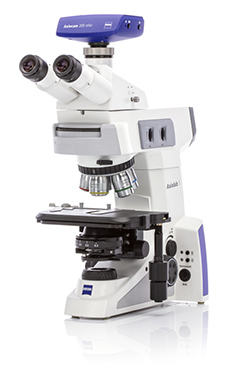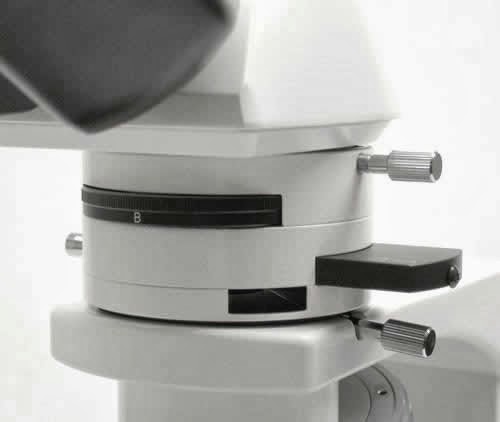
Polarizing Microscope
Polarizing microscopes are also referred to as petrology or geology microscopes. Polarizing light is used with either transmitted and/or reflected light to view chemicals, rocks and minerals.

Polarizing microscopes are also referred to as petrology or geology microscopes. Polarizing light is used with either transmitted and/or reflected light to view chemicals, rocks and minerals. When viewing rocks and minerals thin sections of the sample are mounted on a slide for examination.
One eyepiece of the polarizing microscope incorporates a cross-line reticle which is useful for making measurements as well as segmenting the specimens you are examining. The microscope body uses a Bertrand Lens which analyzes interference patterns in the back focal plane of the objective.
One of the primary purposes of a polarizing microscope is to pick up differences in the optical path of the object you are studying, allowing you to gather more data on absorption color and optical path boundaries of the specimen. This is enhanced through the use of compensator and retardation plates as well as a polarizer in the substage. Strain free objectives and condensers are specially made and selected without inclusions to enrich image contrast and improve the quality of interference reflection by reducing disturbances at the glass-air interfaces.
